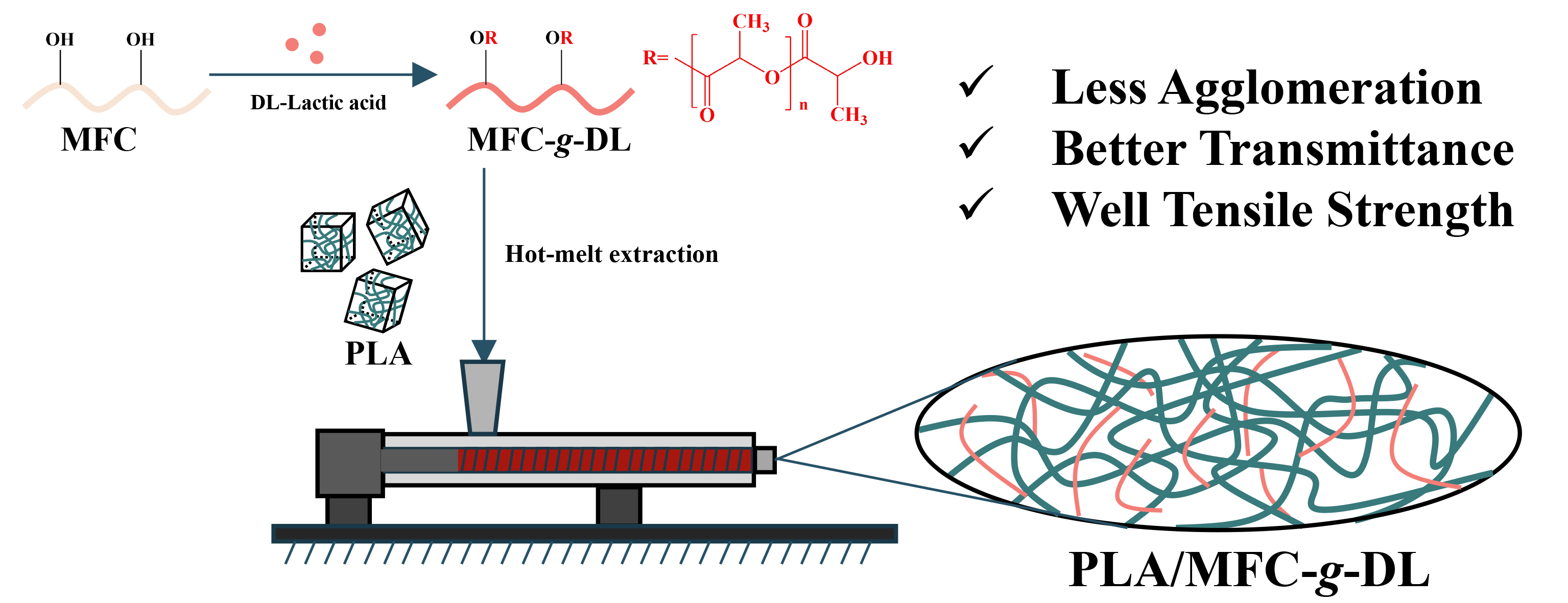 Open Access
Open Access
ARTICLE
Biocomposites of Polylactic Acid Reinforced by DL-Lactic Acid-Grafted Microfibrillated Cellulose
Key Laboratory of Bio-Based Material Science and Technology (Ministry of Education), Material Science and Engineering College, Northeast Forestry University, Harbin, 150040, China
* Corresponding Author: Weihong Wang. Email:
(This article belongs to the Special Issue: Natural Fibre Composites: Design, Materials Selection and Fabrication)
Journal of Renewable Materials 2022, 10(11), 2961-2972. https://doi.org/10.32604/jrm.2022.019761
Received 13 October 2021; Accepted 03 December 2021; Issue published 29 June 2022
Abstract
Microfibrillated cellulose (MFC) is often added to polylactic acid (PLA) matrixes as a reinforcing filler to obtain fully-biodegradable composites with improved mechanical properties. However, the incompatibility between MFC and the PLA matrix limits the mechanical performance of MFC-reinforced PLA composites. In this paper, DL-lactic acid-grafted-MFC (MFC-g-DL) was used to improve the compatibility with PLA. Reinforced composites were prepared by melt extrusion and hot-cold pressing. The tensile strength of the PLA/MFC-g-DL composite increased by 22.1% compared with that of PLA after adding 1% MFC-g-DL. Scanning electron microscopy (SEM), differential scanning calorimetry (DSC), and dynamic thermomechanical analysis (DMA) were used to explore the enhancement mechanism. The energy dissipation in the MFC network and the improved compatibility between PLA and MFC-g-DL played important roles in the reinforcement. The SEM results showed that there was a closer combination between PLA and MFC-g-DL. The DSC results showed that the addition of cellulose changed the glass transition temperature, melting temperature, and crystallization temperature of PLA. The TG results showed that the initial and maximum decomposition temperature were lower than those of PLA. The ultraviolet spectra showed that the composite had good transparency at a low concentration of MFC-g-DL.Graphic Abstract

Keywords
Cite This Article
 Copyright © 2022 The Author(s). Published by Tech Science Press.
Copyright © 2022 The Author(s). Published by Tech Science Press.This work is licensed under a Creative Commons Attribution 4.0 International License , which permits unrestricted use, distribution, and reproduction in any medium, provided the original work is properly cited.


 Submit a Paper
Submit a Paper Propose a Special lssue
Propose a Special lssue View Full Text
View Full Text Download PDF
Download PDF Downloads
Downloads
 Citation Tools
Citation Tools